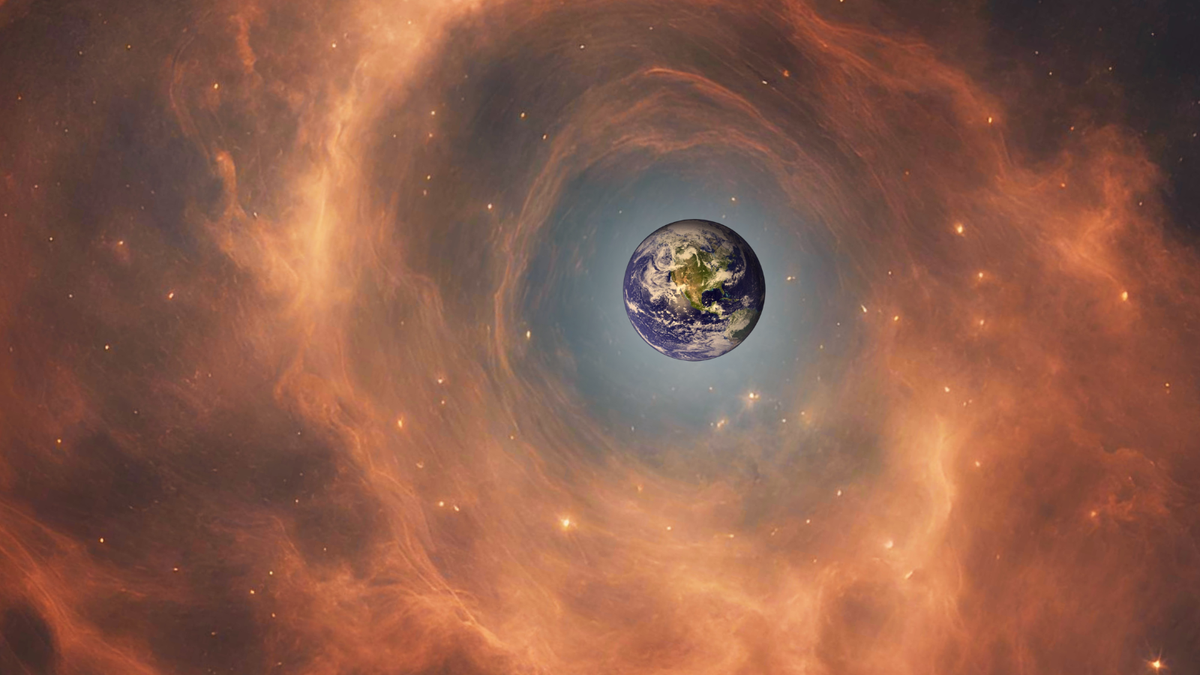Scientists believe that Earth briefly lost protection from the sun about two million years ago and had to endure the extreme environment of interstellar space as the solar system passed through a dense cloud of gas and dust between the stars.
At that time, early human ancestors shared our planet with prehistoric animals such as mastodons and sabre-tooth tigers. It was also when Earth was in the middle of the Ice Age, which didn’t end until about 12,000 years ago. Ice ages are caused by a range of factors, including the tilt and rotation of our planet, carbon dioxide levels in the atmosphere, and shifting plate tectonics and volcanic eruptions at the surface. However, given the time at which scientists believe Earth plunged through interstellar space, this research suggests that radical changes in our planet’s climate, such as the beginning and end of ice ages, could also be influenced by our solar system’s position in our own galaxy.
More specifically, the team behind the new findings suggests that the solar system may have encountered a dense patch of interstellar gas and dust when it crossed the Milky Way two million years ago. And that spot could have been thick enough to interfere with a stream of charged particles called the “solar wind” that flows from the sun and impacts Earth, potentially causing temperatures to drop.
Related: ‘God’s Hand’ Interstellar Cloud Reaches for the Stars in New Dark Energy Camera Image (Video)
“This paper is the first to quantitatively demonstrate that an encounter occurred between the Sun and something outside the solar system that could have influenced Earth’s climate,” said lead researcher Merav Opher, a space physicist and heliosphere expert at the University from Boston. in a statement.
The solar system, back in time
Our entire solar system is shrouded in a ‘giant bubble’ of protective plasma emanating from the sun, known as the ‘heliosphere’. This protective shield is created when solar winds push on the interstellar medium, which refers to material floating through the spaces between stars in the Milky Way. The heliosphere is constantly refreshed by a constant stream of charged particles from the Sun, which flow past Pluto.
The heliosphere protects the Earth’s surface from radiation and galactic radiation that could potentially affect the DNA of living things. This shielding is so crucial that many scientists believe it was integral to the origin and evolution of life on Earth.
This team thinks it’s possible that a cold cloud of interstellar material once obstructed the solar wind in such a way that it compressed the heliosphere. This could have, for a short period (in cosmic terms), deprived Earth and other planets in the solar system of the protection provided by the heliosphere.
“Stars move, and now this paper shows not only that they are moving, but that they are undergoing drastic changes,” Opher added.
To determine what effect such a bombardment of dense interstellar dust would have had on Earth’s heliosphere, Opher turned back the clock using advanced computer models. This allowed her and the team to visualize where the Sun was two million years ago and determine where the heliosphere and the rest of the solar system were at that time.
They also tracked the progress of a series of dense cold gas, called the “Local Ribbon of Cold Clouds system,” back in time as it moved through the Milky Way. This showed that a dense cloud at the tip of the Local Ribbon of Cold Clouds system, called the “Local Lynx of Cold Cloud”, could have collided with the heliosphere.
This would have exposed Earth to the interstellar medium, including the heavy and radioactive elements that populate it, which are the remains of massive stars that die in supernova explosions. The heliosphere usually blocks these particles – without that shielding, these radioactive elements could have fallen to Earth. This could explain an increase in the isotopes iron 60 and plutonium 244 found in Antarctic snow and ice cores and on the moon, corresponding to a period of two million years ago. The timing of the heliosphere’s collision with the local Cold Cloud Lynx is also consistent with a cooling period on Earth two million years ago.
Opher theorizes that pressure from the local Cold Cloud Lynx could have confined the heliosphere for a period of just a few hundred years, or even a million years. This would all depend on how big the cloud actually was, Opher said. She added that the heliosphere would have grown again to surround the planets after the influence of this dense cloud disappeared.
For now, however, it is difficult to determine exactly what impact this cold interstellar cloud would have had on Earth, even if it really could have caused an ice age. The team will now investigate even further back in time to discover other times when the solar system crossed paths with dense interstellar clouds and to determine whether these also align with ice ages.
She and her team are now also investigating the effect of so much hydrogen and radioactive material crossing Earth’s atmosphere.
“This cloud was indeed in our past, and crossing something that big exposed us to the interstellar medium,” Opher said. “This is just the beginning.”
The team’s research was published Monday (June 10) in Nature Astronomy.
